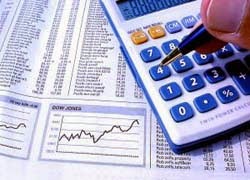Introduction
Cash flow statement provides considerable information about what is really happening in a business beyond that contained in either the income statement or the balance sheet. Analyzing this statement will quickly become obvious that the benefits of understanding the sources and uses of a company’s cash far outweigh the costs of undertaking some very straightforward analyses. In this chapter we are going to learn about the preparation of the cash flow statements.What are Cash Flow Statements?
Cash flow statement, which shows inflows and outflows of the cash and cash equivalents. This statement is usually prepared by a company as a tool to know about the sources and uses of cash and cash equivalents of an enterprise over a period of time from various activities of an enterprise. It has gained substantial importance in the last decade because of its practical utility to the users of financial information.Who Requires a Cash Flow Statement?
- Executives require knowing if the cash generated by the company will be sufficient to fund their expansion strategy
- Stockholders will be able to know if the firm is generating enough cash to pay dividends
- Suppliers would be interested to know if their customers will be able to pay, on offering credit
Division of Cash Flow Statements
The cash flow statement is divided into three sections- Operating activities - Converts the items reported on the income statement from the accrual basis of accounting to cash. Shows the results of cash inflows and outflows related to the fundamental operations of the basic line or lines of business in which the company engages. (Example: cash receipts from the sale of goods or services and cash outflows for purchasing inventory and paying rent and taxes.)
- Investing activities - Reports the purchase and sale of long-term investments and property, plant and equipment.
- Financing activities - Reports the issuance and repurchase of the company's own bonds and stock and the payment of dividends.

Detecting changes in cash with change in various accounts
- When an asset (other than cash) increases, the Cash account decreases.
- When an asset (other than cash) decreases, the Cash account increases.
- When a liability increases, the Cash account increases.
- When a liability decreases, the Cash account decreases.
- When owner's equity increases, the Cash account increases.
- When owner's equity decreases, the Cash account decreases.
The differences in a company's balance sheet accounts will provide much of the needed information. For example, if the statement of cash flows is for the year 2009, the balance sheet accounts at December 31, 2009 will be compared to the balance sheet accounts at December 31, 2008. The changes—or differences—in these account balances will likely be entered in one of the sections of the statement of cash flows.
Cash Provided From or Used By Operating Activities
Operating activities are the activities that constitute the primary or main activities of an enterprise, for example, for a company manufacturing garments, procurement of raw material, incurrence of manufacturing expenses, sale of garments, etc. These are the principal revenue producing activities (or the main activities) of the enterprise and other activities that are not investing or financing activities. By Operating Activities This section of the cash flow statement reports the company's net income and then converts it from the accrual basis to the cash basis by using the changes in the balances of current asset and current liability accounts, such as:Accounts Receivable
Inventory
Supplies
Prepaid Insurance
Other Current Assets
Notes Payable (generally due within one year)
Accounts Payable
Wages Payable
Payroll Taxes Payable
Interest Payable
Income Taxes Payable
Unearned Revenues
Other Current Liabilities
In addition to using the changes in current assets and current liabilities, the operating activities section has adjustments for depreciation expense and for the gains and losses on the sale of long-term assets.
Cash Provided From or Used By Investing Activities
Investing activities relate to purchase and sale of long-term assets or fixed assets such as machinery, furniture, land and building, etc. Transactions related to long-term investment are also investing activities.This section of the cash flow statement reports changes in the balances of long-term asset accounts, such as:
Long-term Investments
Land
Buildings
Equipment
Furniture & Fixtures
Vehicles
In short, investing activities involve the purchase and/or sale of long-term investments and property, plant, and equipment.
Cash provided from or used by financing activities
Financing activities relate to long-term funds or capital of an enterprise, e.g. cash proceeds from issue of equity shares, debentures, raising long-term bank loans, redemption of bank loan, etcThis section of the cash flow statement reports changes in balances of the long-term liability and stockholders' equity accounts, such as:
Notes Payable (generally due after one year) Bonds Payable
Deferred Income Taxes
Preferred Stock
Paid-in Capital in Excess of Par-Preferred Stock
Common Stock
Paid-in Capital in Excess of Par-Common Stock
Paid-in Capital from Treasury Stock
Retained Earnings
Treasury Stock
In short, financing activities involve the issuance and/or the repurchase of a company's own bonds or stock. Dividend payments are also reported in this section.
Where to enter the balance sheet changes
Below are the changes where balance sheet accounts should be entered on Statement of cash flows:
| A change in this | ...is reported in this section |
|---|---|
| balance sheet category | of the cash flow statement |
| Current Assets | Operating Activities |
| Current Liabilities | Operating Activities |
| Long-term Assets | Investing Activities |
| Long-term Liabilities | Financing Activities |
| Stockholders' Equity | Financing Activities |
*This refers to current assets other than Cash.
--Coming Soon -- Preparation of Cash Flow Statement --


























